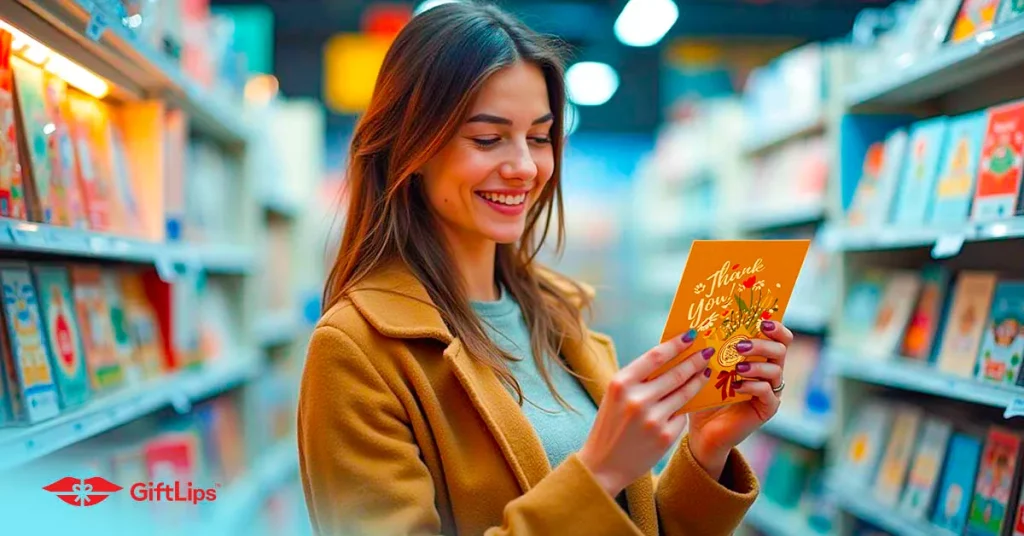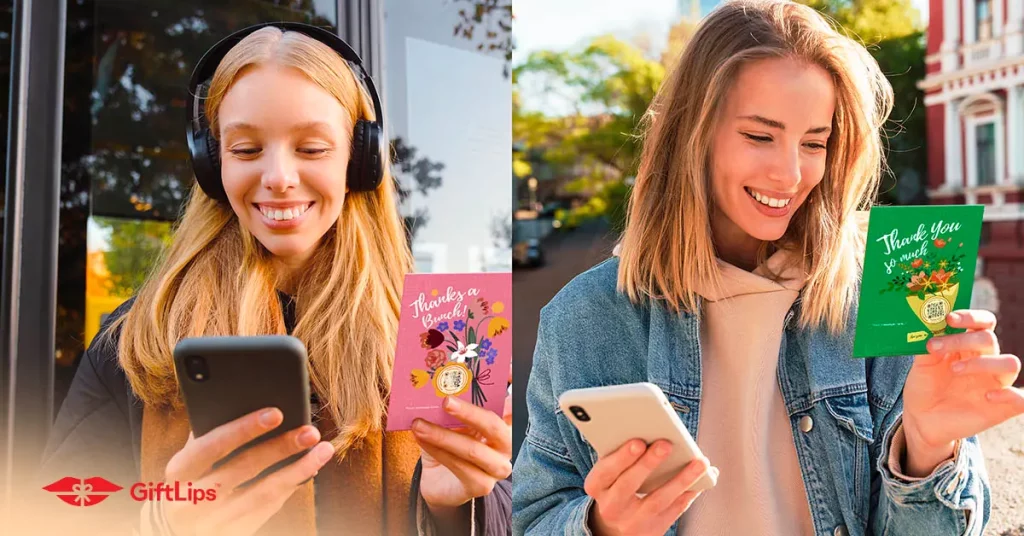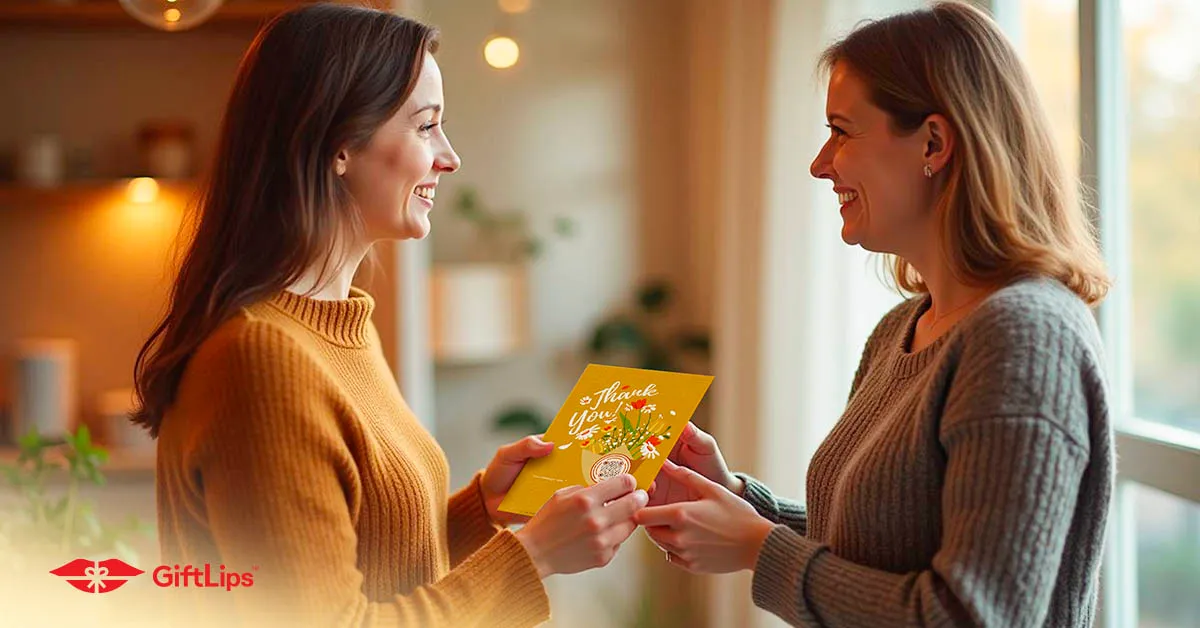Have you ever received a physical greeting card that made you feel truly special?
Perhaps it was the handwritten message, the colorful design, or simply the thoughtfulness behind it.
A recent study found that 78% of people believe that receiving a physical greeting card is more meaningful than an electronic one.
In this blog post, we’ll explore the psychology of sending greeting cards and delve into the reasons why they remain a beloved tradition.
Ready to uncover the secrets behind the power of greeting cards? Keep reading!
The psychology of sending greeting cards

The popularity of greeting cards persists even in the digital age. In fact, 30 million greeting cards online are sent every year, and “Thinking of You” cards make up about 10% of all greeting card sales.
The average person even sends 55 cards per year!
But why do we continue to send and receive greeting cards? What is it about this seemingly simple act that has such a profound impact on our emotions and relationships?
Why send a card?
The power of physical Touch
Human touch is a fundamental aspect of our social interactions. Studies have shown that physical contact can have a positive impact on our emotional well-being, reducing stress and promoting feelings of connection.
When we receive a physical greeting card, we are not only receiving a message but also a tangible object that we can hold, touch, and even smell.
This tactile experience can evoke a sense of intimacy and warmth that is often lacking in digital communication.
The ritual of card-sending
The act of selecting, writing, and sending a greeting card is a ritual that can be both therapeutic and meaningful.
Choosing a card often involves careful consideration of the recipient’s personality and the occasion.
Writing a personal thinking of you message or celebratory wishes can be a cathartic experience, allowing us to express our thoughts and feelings thoughtfully and intentionally.
Physically mailing the card can also be a satisfying way to conclude the process.

The art of expression
Greeting cards are not just pieces of paper; they are works of art that can convey a wide range of emotions and messages.
The design, imagery, sentiment, and handwriting of a card can all contribute to its expressive power.
For example, a card with a humorous image might convey a lighthearted and playful message, while a card with a more somber tone might express sympathy or condolence.
Greeting cards can be a powerful tool for communicating emotions that are difficult to express verbally.
Reasons to send a greeting card
Celebrating milestones

Greeting cards are an essential tool for acknowledging and celebrating significant life events. Whether it’s a birthday, anniversary, graduation, or any other milestone, a card can be a thoughtful and meaningful way to express your joy and support.
By sending a card, you are showing the recipient that you care and that their achievement is important to you.
Examples of milestones commonly celebrated with cards:
Expressing gratitude
Gratitude is a powerful emotion that can positively impact our mental and emotional well-being. In fact, we celebrate World Gratitude Day every year to remind ourselves that there is always something to be thankful for.
Greeting cards are a wonderful way to express gratitude and appreciation to the people in our lives.
A heartfelt thank-you card can show someone that you value their friendship, support, or kindness.
Tips for writing heartfelt thank-you cards:
- Be specific. Mention something specific that you are grateful for.
- Be sincere. Let your genuine feelings shine through in your message.
- Be personal. Tailor your message to the individual you are thinking.
- Be handwritten. A handwritten card is more personal and meaningful than a typed one.
Building relationships

Greeting cards can be a powerful tool for building and maintaining relationships. From a birthday video to holiday greetings, these wonderful little pieces of love is a pure testament of how much you care for your loved ones.
By sending cards regularly, you are showing people that you care about them and that they are important to you. This can help strengthen existing relationships and create new ones.
The importance of maintaining connections through regular card-sending:
- Shows that you care
- Strengthens relationships
- Creates new connections
- Spreads positivity
- Boosts your own well-being
The digital age of e-cards

The rise of electronic cards
In recent years, electronic greeting cards, or e-cards, have become increasingly popular.
E-cards offer the convenience of being sent instantly and can be customized as a video gift with various designs, animations, and sound effects.
They are also a more environmentally friendly option than physical cards. Many people now choose to send cards online because it’s faster, more flexible, and easily accessible from any device.
Advantages:
- Convenience: These free ecards can be sent instantly from anywhere with an internet connection.
- Variety: Sending a digital greeting card offers wide range of designs, animations, and sound effects.
- Environmental friendliness: E-cards are a paperless option that reduces waste.
Disadvantages:
- Lack of physical touch: E-cards do not offer the same tactile experience as physical cards.
- Less personal: Some people may find e-cards to be less personal than handwritten cards.
The personal touch of video greeting cards
Despite their limitations, sending greeting cards can still be a meaningful way to connect with loved ones. With the right tools, personalized and heartfelt digital greeting cards can be created.
GiftLips is a popular free online greeting card maker for custom e-cards.
With GiftLips, you can choose from a variety of templates, add your own photos and messages, and even record a personalized voice message.
This makes it easy to create a unique and memorable e-card that reflects your personality and the occasion.
By incorporating personal touches like photos, messages, voice recordings, and even gift cards, you can make your video greeting cards feel more authentic and meaningful.
This can help bridge the gap between the digital and physical worlds, allowing you to express your feelings in a way that is both convenient and heartfelt.

Sending greeting cards: A simple act has a big impact
Greeting cards are a powerful tool for human connection. They allow us to express our emotions, celebrate milestones, and show our appreciation for the people in our lives.
Whether you prefer physical cards or e-cards, the act of sending a card can be a meaningful and rewarding experience.
So, the next time you want to express your feelings, consider sending a greeting card. It may seem like a small gesture, but it can have a big impact on the person you are sending it to.
As the famous author Helen Keller once said, “The best and most beautiful things in the world cannot be seen or even touched – they must be felt with the heart.”
Greeting cards are a tangible way to connect with others on a heartfelt level. By sending a card, you are not just sharing a piece of paper; you are sharing a piece of yourself.
Ready to make a lasting impression? Create a personalized video greeting card today with GiftLips.
Start creating your video greeting card now and experience the joy of sending something truly special.
Frequently asked questions
What is the purpose of sending greeting cards?
Sending greeting cards serve as a tangible expression of thoughtfulness, care, and connection. They offer a personalized way to convey messages of celebration, sympathy, gratitude, or simply to let someone know you’re thinking of them.
Do people still send greeting cards?
Yes, people still send greeting cards! While technology has made it easier to connect with others through digital means, many people still value the personal touch that a physical card offers. Many people appreciate the thoughtfulness and effort that goes into selecting and sending a greeting card.
